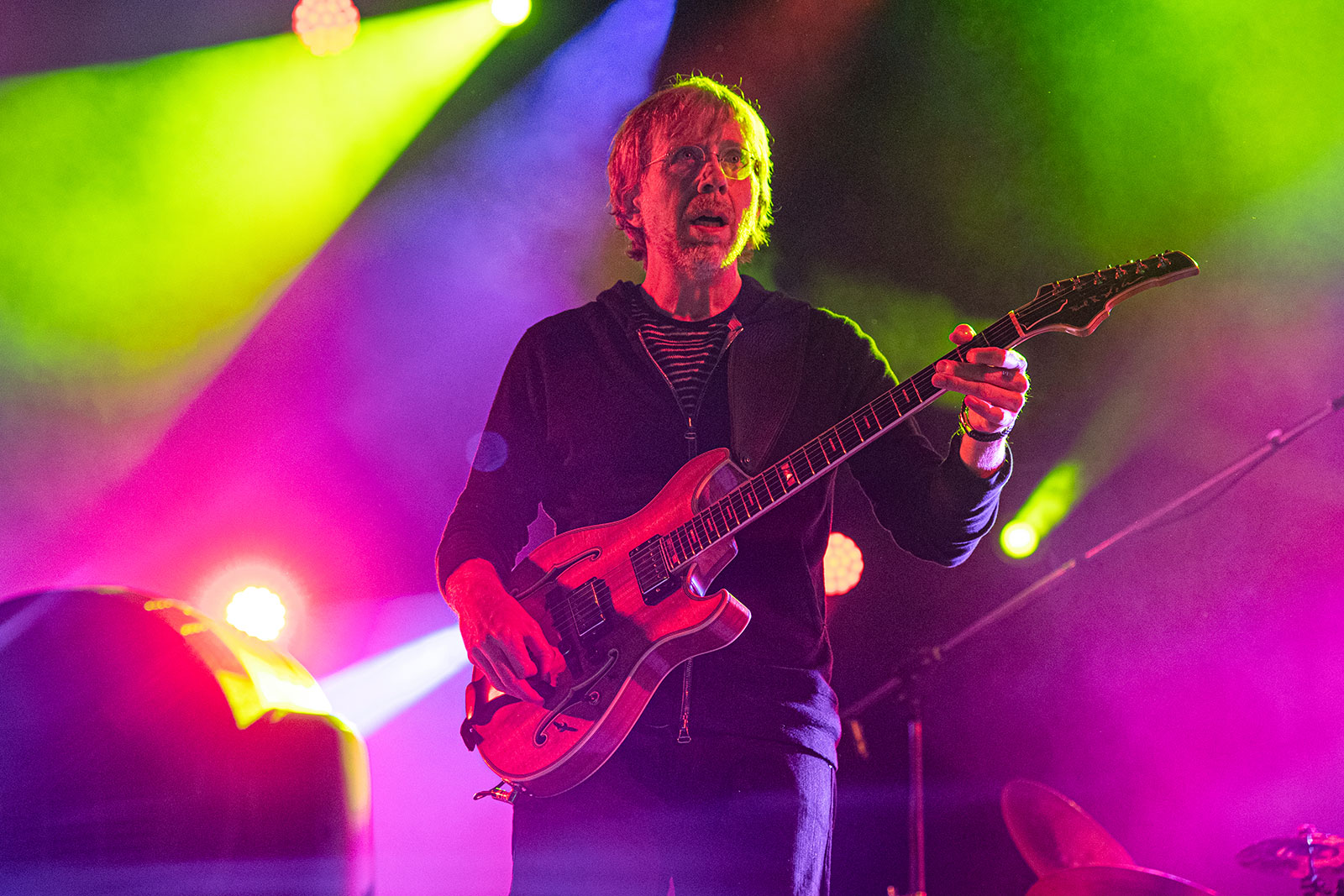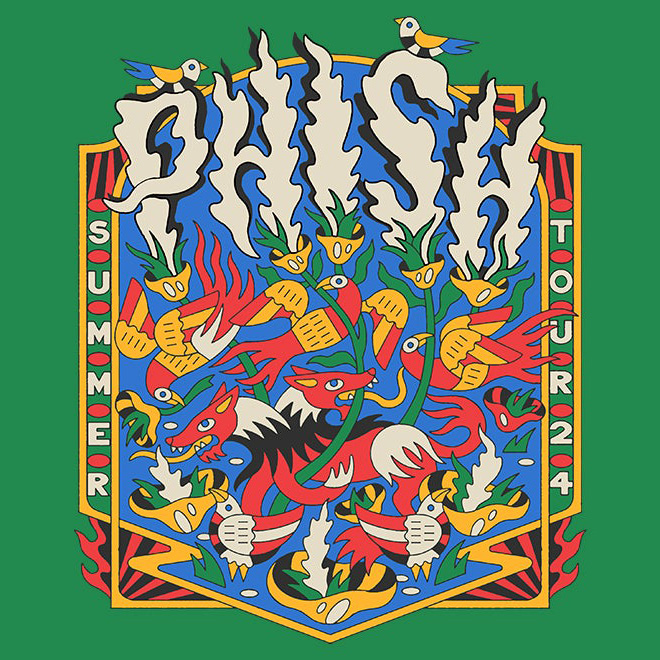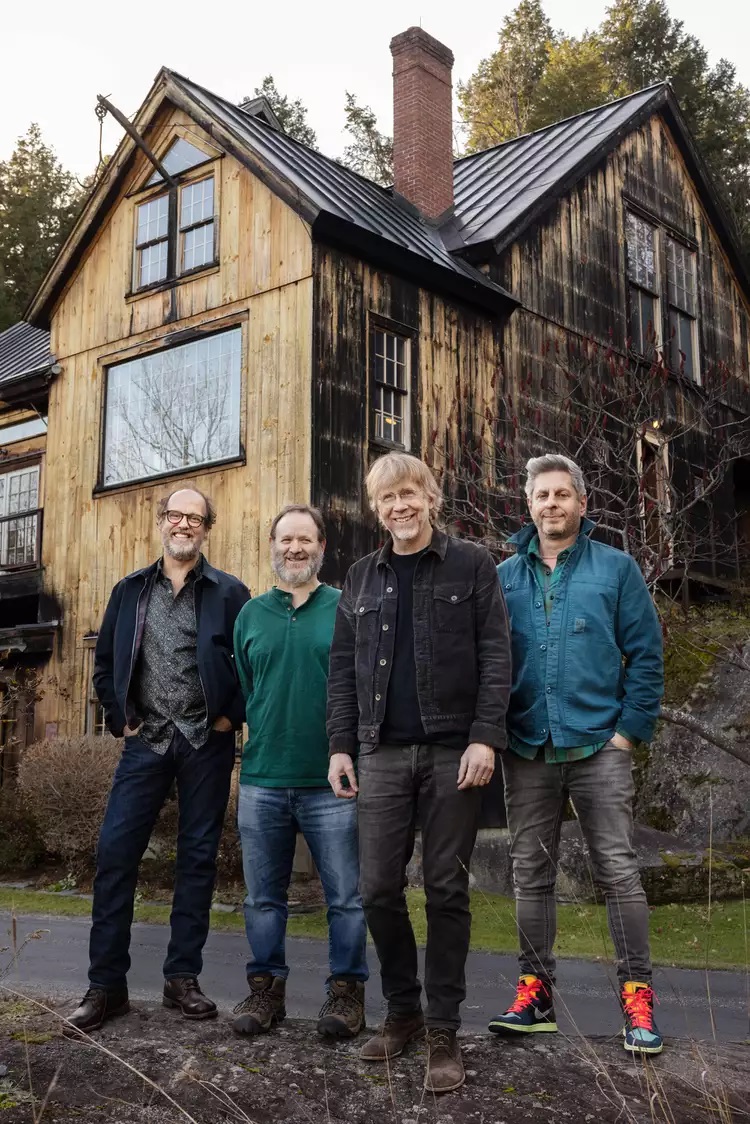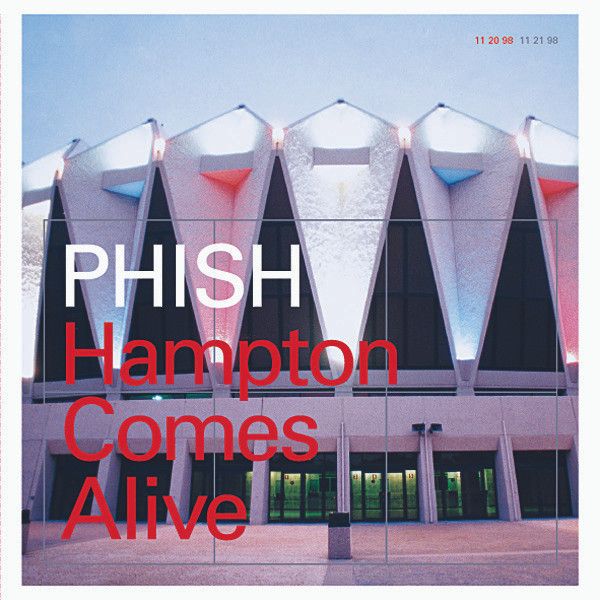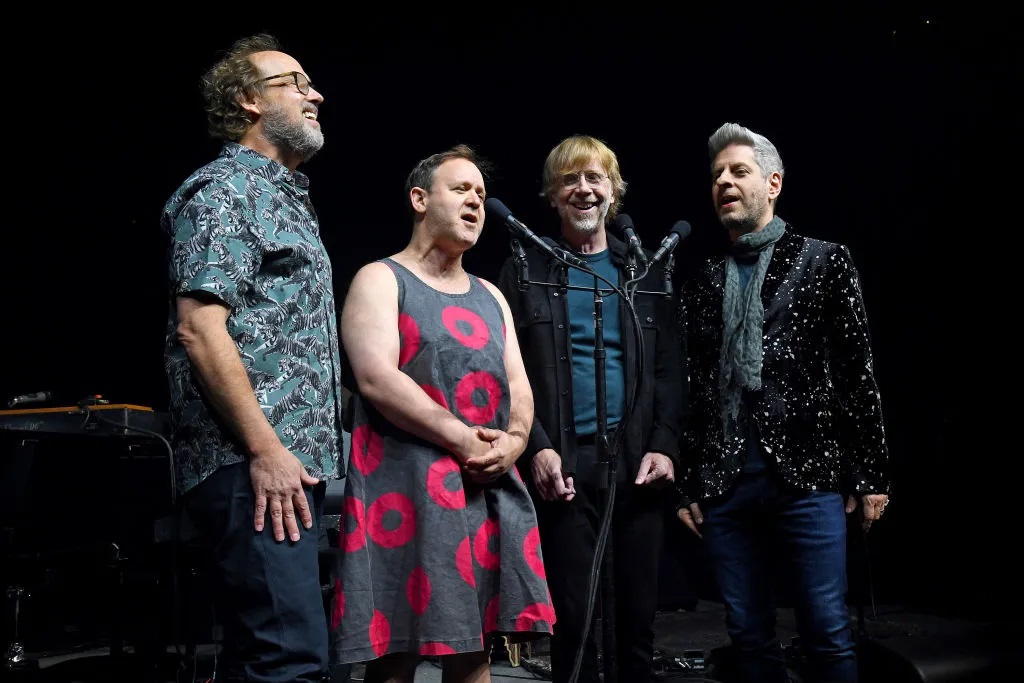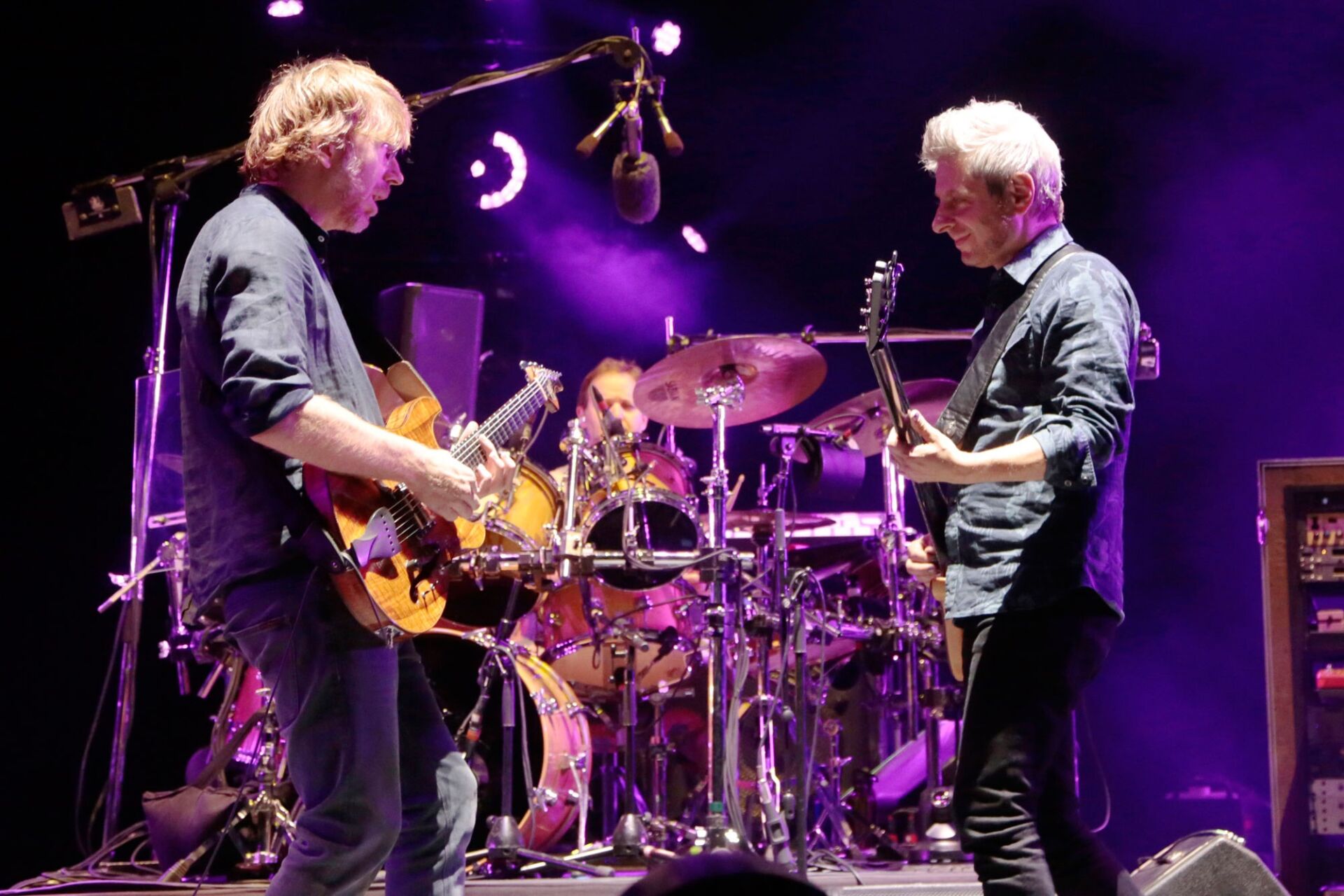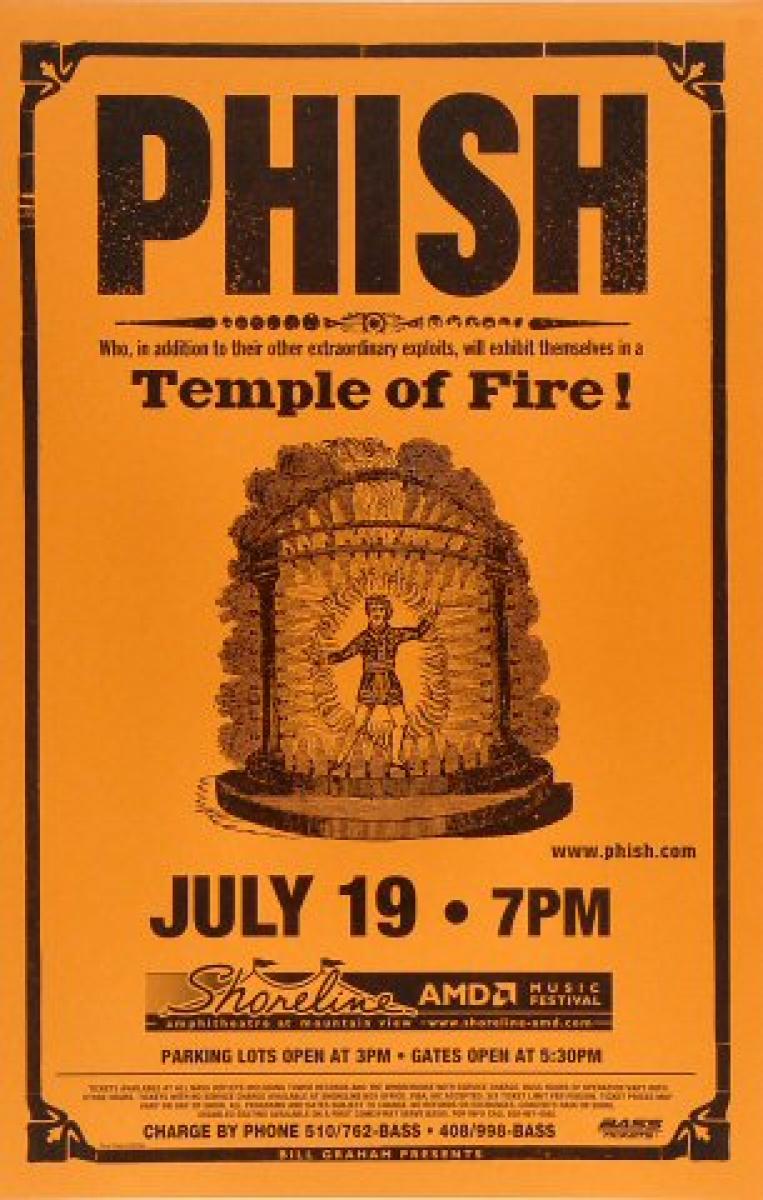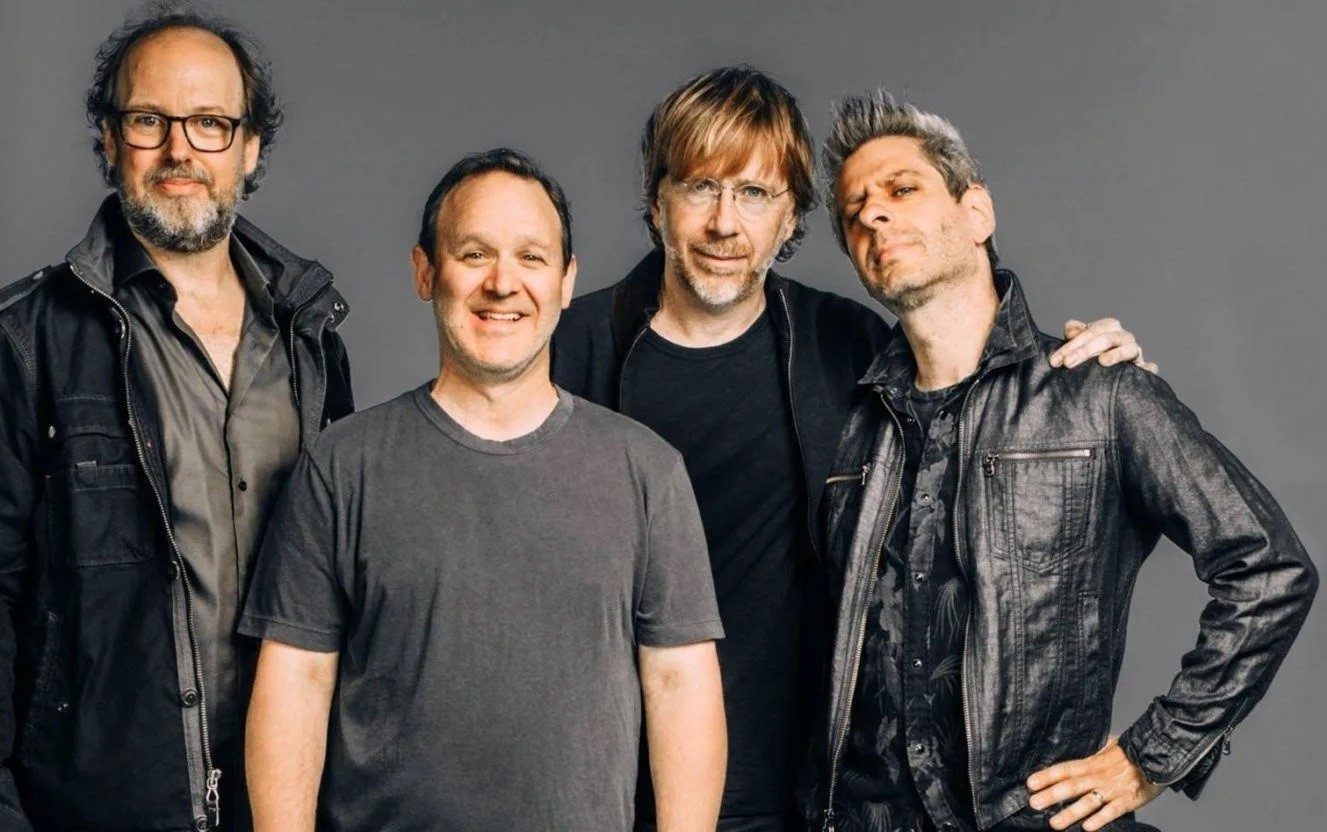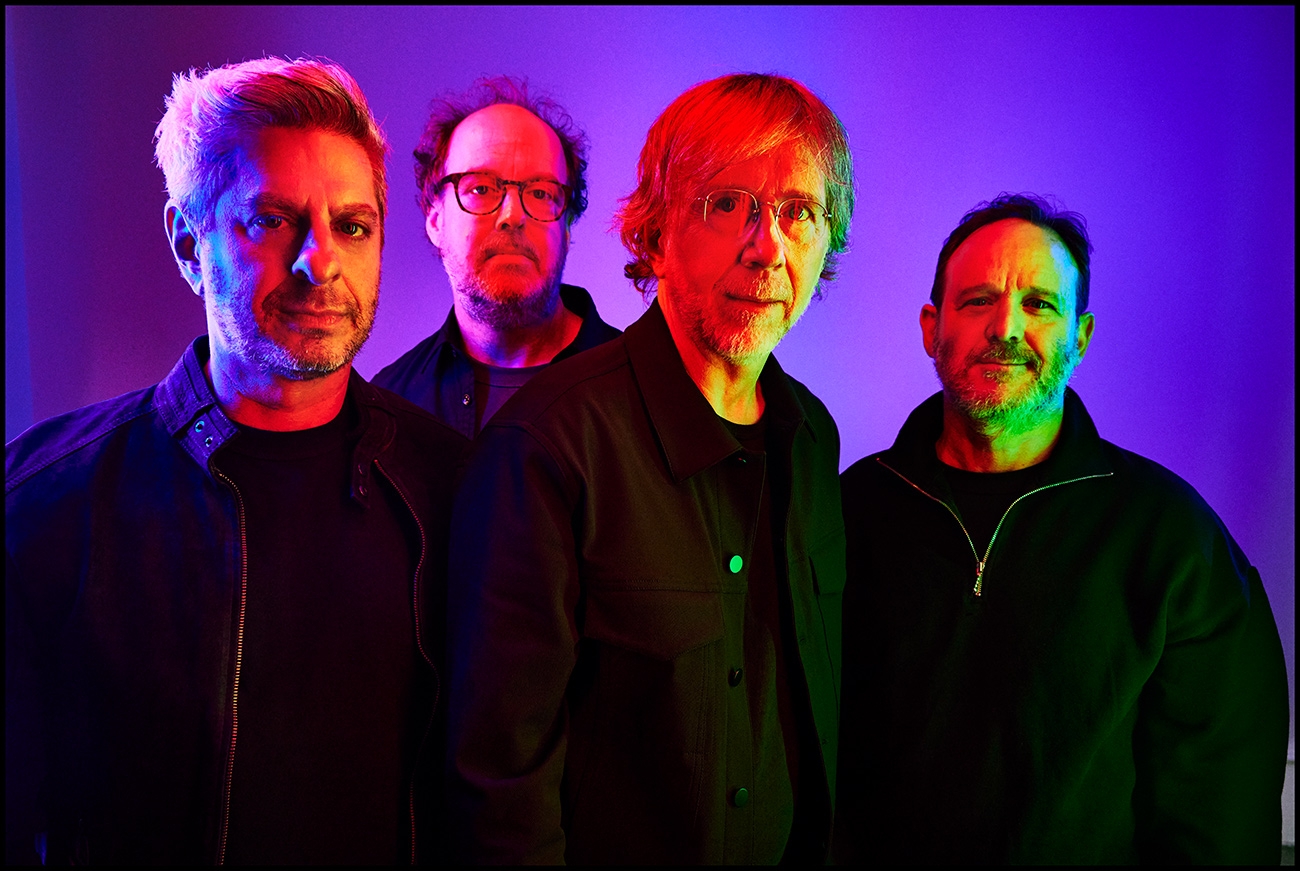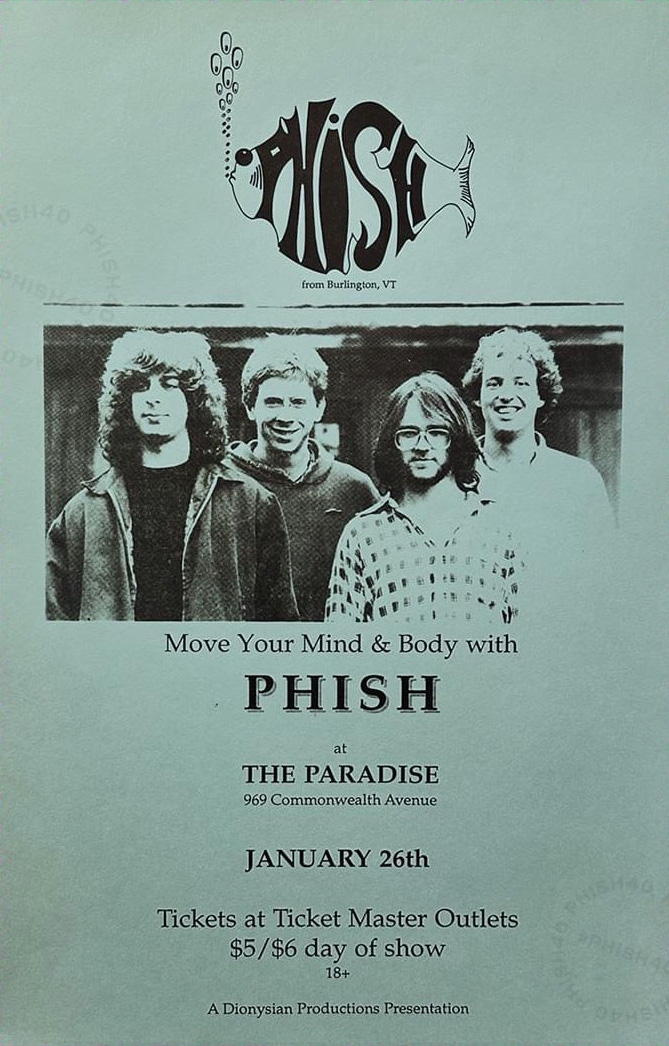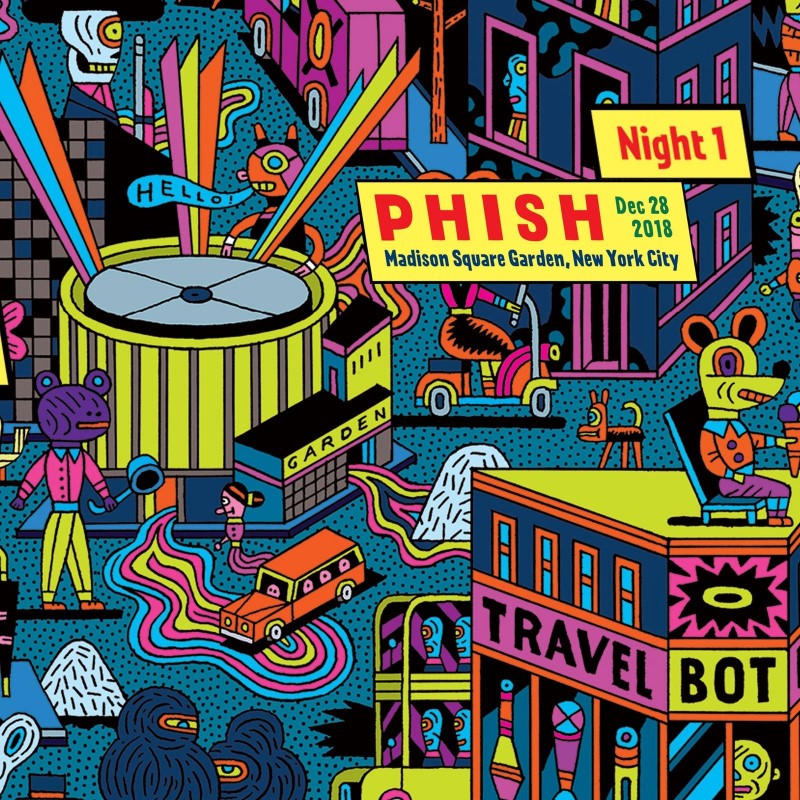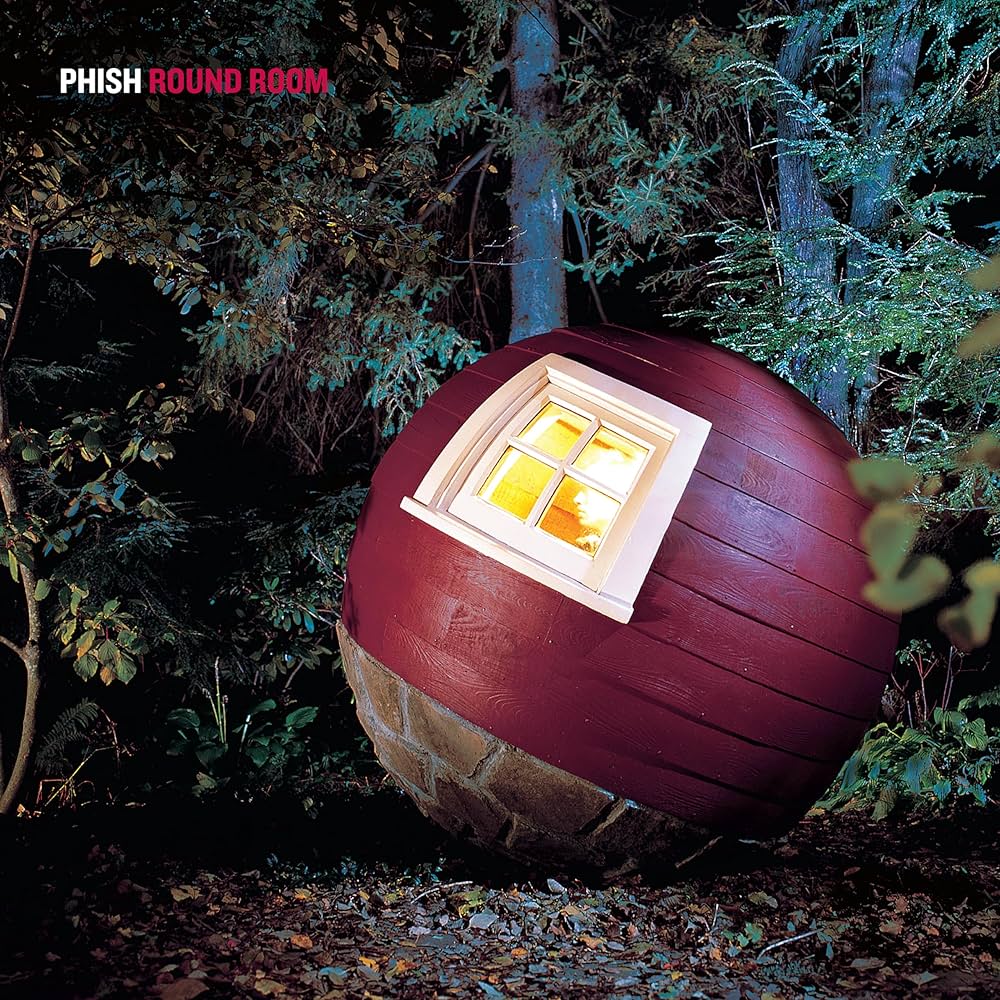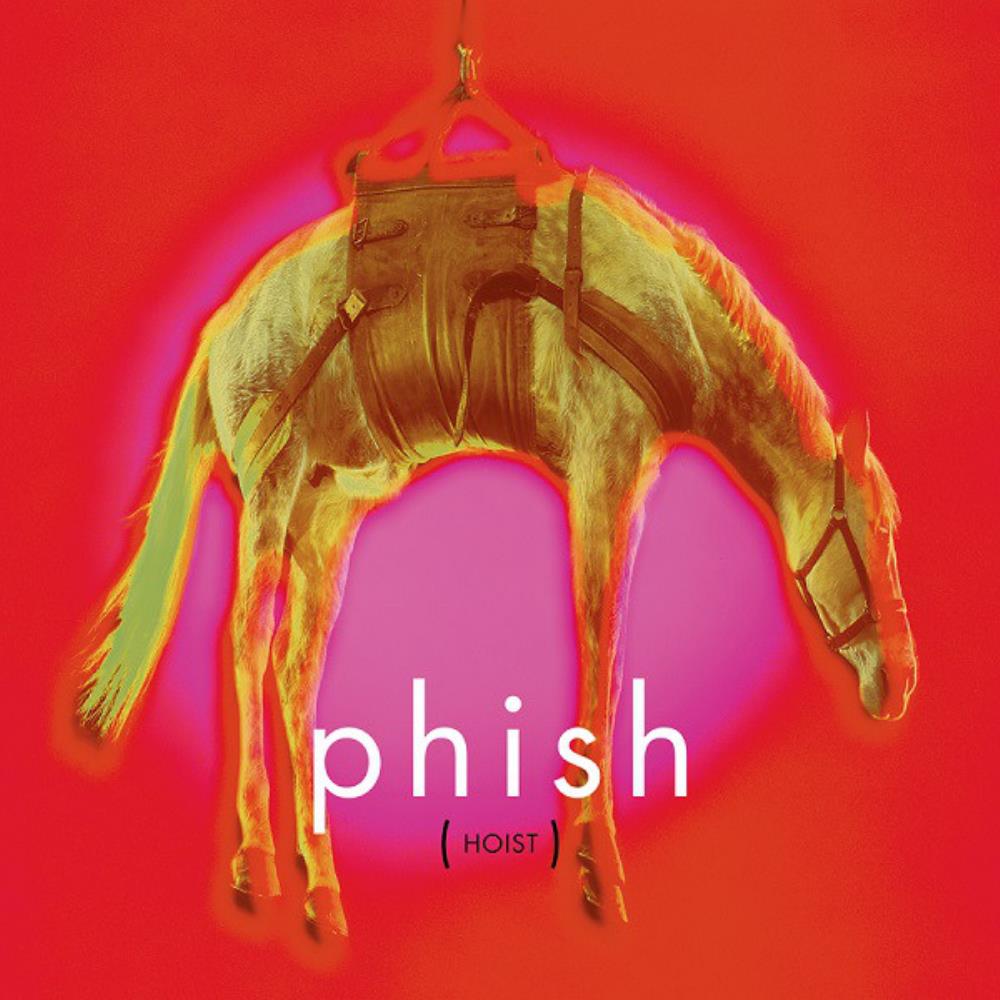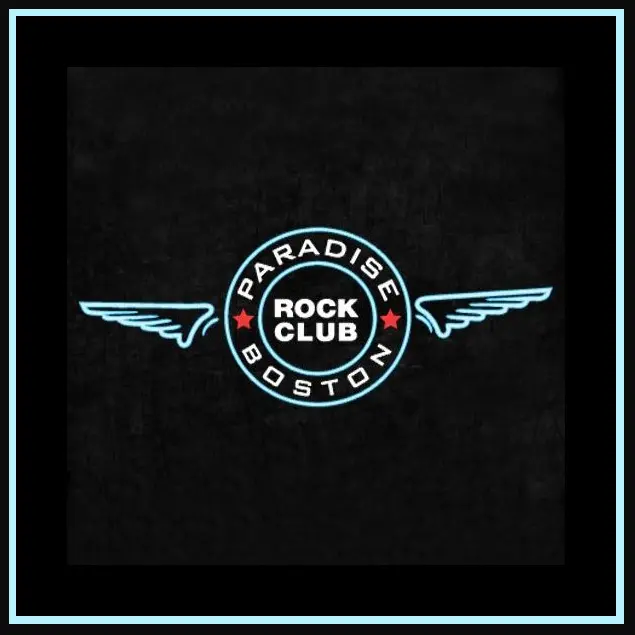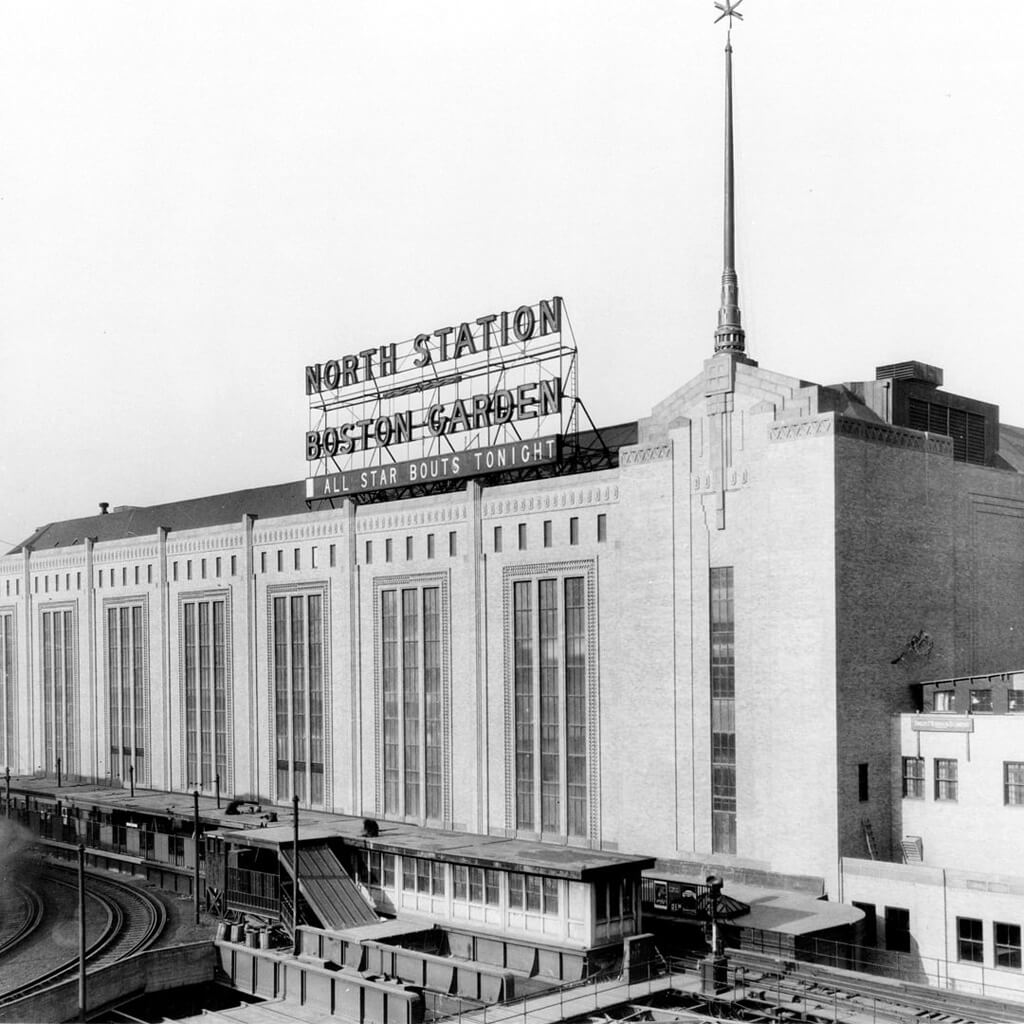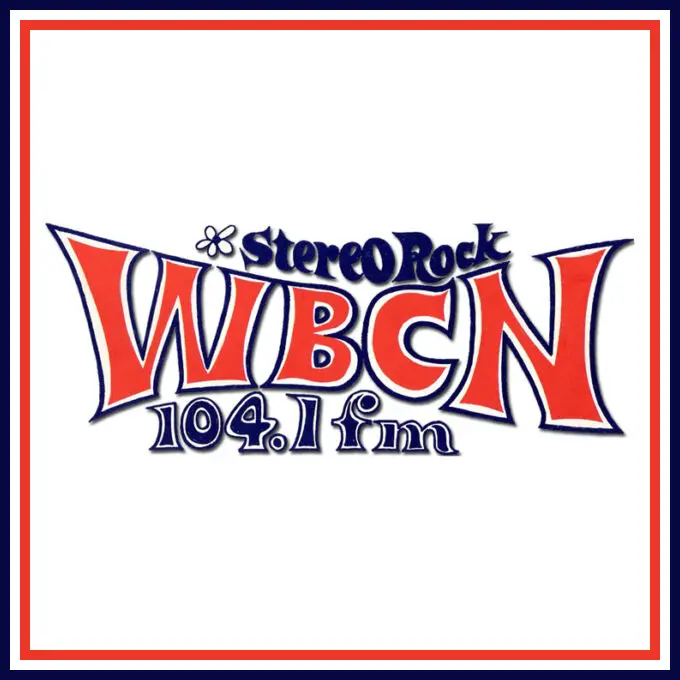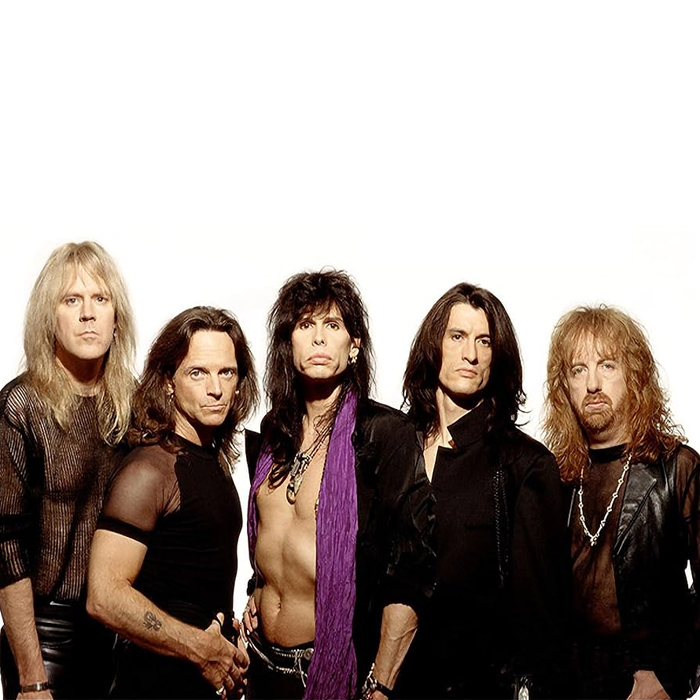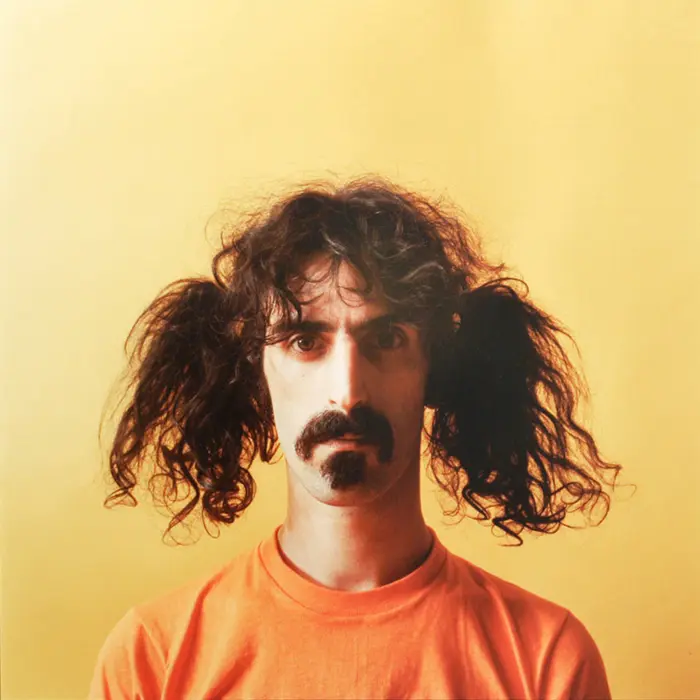Phish
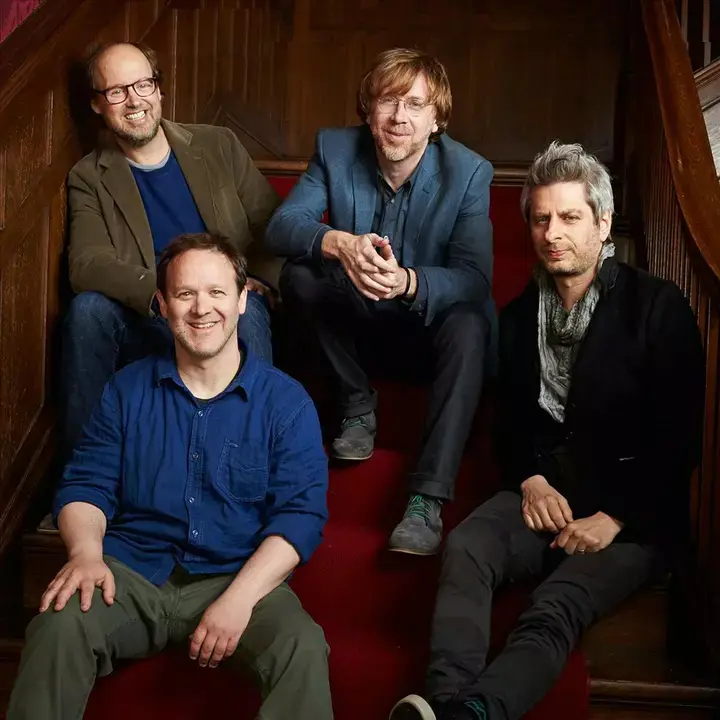
The intrinsic interwovenness of Phish’s and the Grateful Dead’s artistic approaches and legacies is patently obvious to anyone who knows anything – anything at all – about the bands. Any effort to explain the details to such people is unnecessary, if not annoying or even borderline insulting.
But for those unfamiliar with the two groups and how wholly intertwined they are – creatively, musically, culturally, some would say spiritually – here’s the net-net: Their shared commitment to an ethos and aesthetic that values community over cashing in made them such an elemental part of the counterculture that Ben & Jerry’s – the Vermont-based ice cream company founded by two former hippies on the same peace-and-love principles the bands embrace – named a flavor after each, Cherry Garcia (in 1987) and Phish Food (in 1997).
OVERVIEW
The defining jam band of the late-20th and early-21st centuries, for the past 40 years Phish has been serving up a searing sonic smorgasbord of everything from rock, jazz, folk, blues, country and classical to bluegrass, reggae, psychedelia, pop and electronica, venturing beyond even the Dead’s endless varieties of genre bending. Through 73 albums (20 studio, 53 live), boatloads of bootlegs and tireless touring, they’ve pieced together a fervent fanbase of “Phish-heads” and “phriends” that’s drawn as much to the group’s people-over-profit spirit – encouraging their audiences to tape shows and share the tapes, for example – as to its members’ ferocious chops and free-form improvisational explorations.
Phish changes its setlist for every show, performs iconic albums by other bands front-to-back at its annual Halloween events and – despite extremely limited radio airplay – has strolled its groovy self into mainstream America’s living rooms with appearances on The Simpsons and in the Rock Band video game series while being parodied on South Park.
Four decades after the group’s founding – when the band members had just reached legal drinking age – the name “Phish” is known to tens of millions across several generations, most of whom have never heard a single one of their songs.
FORMATION, FIRST PERFORMANCES, COLORADO ‘88
The group formed in September 1983 at the University of Vermont in Burlington, initially as the trio of guitarist/vocalist Trey Anastasio, guitarist Jeff Holdsworth and drummer Jon Fishman, but became a quartet in November that year with the addition of bassist Mike Gordon. They made their debut at UVM’s Harris Millis Cafeteria in December, playing classic rock covers including two Grateful Dead songs.
After playing one more gig, Anastasio was suspended for a prank he’d pulled and the band lay dormant until his return in September 1984. In October, they played their first gig billed as Phish, Anastasio designing the band’s logo just as Steven Tyler had done for Aerosmith and Freddy Mercury for Queen. In 1985, after percussionist Marc Daubert joined the band briefly and left, Goddard College student Page McConnell came on board as keyboardist and Holdsworth departed, establishing what became the band’s lineup to this day: Anastasia, McConnell, Gordon and Fishman.
They played spring concerts at UVM and Goddard and in 1986 Anastasio and Fishman transferred to the latter, graduating with McConnell in 1988. In July that year, they played seven shows in Colorado, their first gigs outside of New England, captured on the LP Colorado ’88, released in 2006, the same year they recorded Phish (also known as The White Tape), a collection of demos often cited as the band’s first album that was released in 1998 on one of the band’s two labels, Phish Dry Goods.
PARADISE ROCK CLUB BREAKOUT APPEARANCE, RELIX REVIEW
In January 1989, Phish made their breakout appearance in Boston at the Paradise Rock Club – by commandeering the place. When the club’s management refused to book the relatively unknown group, which had played only a handful of gigs in and around the city before, the band rented out the club for a night, hardcore fans in Burlington rented a Greyhound bus for the 180-mile trip to Boston to see the show and the then-650-capacity Paradise sold out, establishing Phish as a new force on the regional circuit and leading to bookings at Somerville Theatre and Worcester Memorial Auditorium, among other prominent venues.
In October that year, after the band self-released their debut album, Junta (on cassette only, no vinyl), New York-based live-music magazine Relix published a feature on the group (“Too New To Be Known”), marking their first national media exposure. “I hope we get a chance to hear more from these extremely talented musicians in the not too distant future,” Relix wrote. “Meanwhile, this tape comes highly recommended.”
LAWN BOY, ELEKTRA SIGNING, A PICTURE OF NECTAR
In 1990, the band recorded their second album, Lawn Boy, released in September that year by Absolute A Go Go Records, and a year later they landed a deal with Elektra, staying with the label until they established their own, JEMP Records, in 2005. In 1992, a banner year for the group in every possible way, Elektra issued A Picture of Nectar – named after Nectar Rorris, owner of Nectar’s in Burlington, a bar/restaurant where Phish was a regular act – and reissued Junta and Lawn Boy.
Also that year, Phish played their debut shows in the UK and Europe (opening for Violent Femmes), joined the first Horizons of Rock Developing Everywhere (HORDE) tour – their first experience of hundreds to follow playing amphitheaters – and performed a New Year’s Eve show at Boston’s Matthew’s Arena that was simulcast on WBCN.
RIFT, BILLBOARD 200 DEBUT, OTHER ‘90S ALBUMS, COLLECTIONS
In 1993, the band maintained the forward momentum with the February release of their fourth LP, Rift, which debuted at #51 in the Billboard 200 – their first time on any album ranking – and were cooking with gas for the rest of the decade.
Over the next seven years, while continuing to build a rabid fanbase that would make any group seethe with competitive envy, they recorded eight albums: Hoist, with the single “Down with Disease” reaching #33 in the Billboard Hot Mainstream Rock Tracks chart (1994); A Live One, which hit #18 in the Billboard 200 and was the band’s first platinum-selling album (1995); Billy Breathes, which went to #7 in the Billboard 200; Slip, Stitch and Pass, their second live LP (1997); Story of the Ghost, a jazz-funk outing with the single “Birds of a Feather” making the Top 20 (1998); The Siket Disc, a collection of instrumental improvisation (1999); and Hampton Comes Alive, a six-disc package featuring four complete live sets (1999).
DEADHEADS BECOME PHISHHEADS, THE CLIFFORD BALL, THE GREAT WENT
The band’s rapidly expanding popularity brought them to larger venues, starting in December 1994 when they debuted at Boston Garden, Madison Square Garden and Providence Civic Center. At the close of that year, they were #32 on Pollstar’s list of the highest grossing US concert tours. One factor behind the bigger crowds, Anastasio has said, was the death of the Grateful Dead’s frontman Jerry Garcia in August 1995, after which legions of Deadheads became Phishheads virtually overnight. In 2015, Anastasio was Garcia’s stand-in for the Dead’s 50th anniversary concerts.
In August 1996, Phish put together the first of their many multi-day festivals, called The Clifford Ball, at the decommissioned Plattsburgh Air Force Base in New York, which drew between 70,000 and 80,000 attendees to hear the band play six sets over two days, the largest single concert by attendance in the US that year. In August 1997, they organized the second festival, called The Great Went, at Loring Air Force Base in Limestone, Maine (near the US-Canada border), which drew between 60,000 and 70,000.
FARMHOUSE, ROUND ROOM, UNDERMIND, LIVE PHISH SERIES
By the turn of the century, Rolling Stone had labeled Phish “the most important band of the ‘90s” and the group was one of the top-drawing live acts anywhere on Earth. While they’ve always been viewed as a live band rather than a studio-bound one, they recorded three albums for Elektra between 2000 to 2004, each reaching the upper end of the Billboard 200: Farmhouse (2000, #12), Round Room (2002, #46) and Undermind (2004, #13).
Between late 2000 and late 2005, Elektra released the now-27-volume Live Phish series, full concerts recorded across the US between 1998 and 2003 including ones in Massachusetts, New Hampshire, Rhode Island, Vermont and Maine, and one that was recorded in Japan. In 2023, according to the band’s official website, Elektra will add six more to the series. Since 2011, the band has issued 14 live albums on its JEMP label – which they established in 2005 – on a combination of LP, CD and streaming platforms,
2004-2008 HIATUS, REUNION
From mid-2004 until fall 2008, the band took a break while band members pursued various solo projects, but they released archival Phish material (both studio and live) on their JEMP label including New Year’s Eve 1995 (2005), Live in Brooklyn (2006), Headphones Jam (2006), Colorado ’88 (2006), Vegas ‘96 (2007) and At the Roxy (2008).
They reunited informally in September 2008 to play three songs at their former tour manager’s wedding and their official reunion kicked off in March 2009 with three sold-out shows at the Hampton Coliseum in Virginia, followed by a national tour that included a show at Fenway Park.
JOY, FUEGO, SIGMA OASIS, GET MORE DOWN
In mid-2009, the group recorded their twelfth album, Joy, with famed producer Steve Lillywhite and it reached #13 in the Billboard 200 upon its release in September. They resumed touring, but limited themselves to a fraction of their previous bookings – down from over 200 shows per year to roughly 50 – and appeared at the festivals they organized themselves and at others including Austin City Limits in Austin, Texas, Outside Lands in San Francisco and Bonnaroo in Manchester, Tennessee.
In June 2014, Phish released Fuego on JEMP and sailed to #7 in the Billboard 200 – their highest charting album since Billy Breathes 18 years before – and in 2016 they followed with Big Boat, which reached #19. In 2020, they issued Sigma Oasis, then their most recent album, Get More Down, in October 2022. In 2021, Pollstar listed Phish as the ninth-highest grossing concert act in the world, with $44.4 million in ticket sales.
COMMENTS ON PHISH-DEAD COMPARISONS
Asked in a 2019 interview with The New York Times about the comparisons of Phish and the Grateful Dead, Anastasio said that Phish’s first two records “sound nothing like the Dead” and that his most significant early influences were ‘60s/‘70s-era prog-rock groups like King Crimson, Genesis and Yes, echoing comments in Parke Puterbaugh’s book Phish: The Biography (Da Capo Press, 2009).
“The bottom line is while it’s impossible to imagine Phish without the Grateful Dead as forebears, many other musicians figured as influences upon them,” Puterbaugh wrote. “Some of them – such as Carlos Santana and Frank Zappa – were arguably at least as significant as the Grateful Dead. In reality, the media certainly overplayed the Grateful Dead connection and Phish probably underplayed it, at least in their first decade.”
(by D.S. Monahan)

